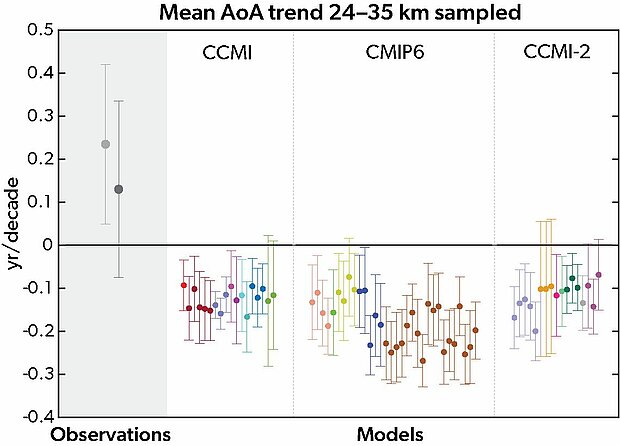Middle atmosphere Circulation
Atmospheric circulation affects climate through the transport of climate relevant trace gases and through dynamical coupling: Variability in the stratospheric circulation can influence temperature and precipitation extremes at the Earth surface.
©KIT

The current gap in our understanding of changes in the middle atmosphere circulation is summarized in this figure: Observations show a long-term decrease in the speed of the stratospheric Brewer-Dobson circulation with increasing age-of-air, while climate models show a significant increase in the speed, with decreasing age-of-air in the stratosphere.
Image credit: WMO 2022 Ozone Assessment

